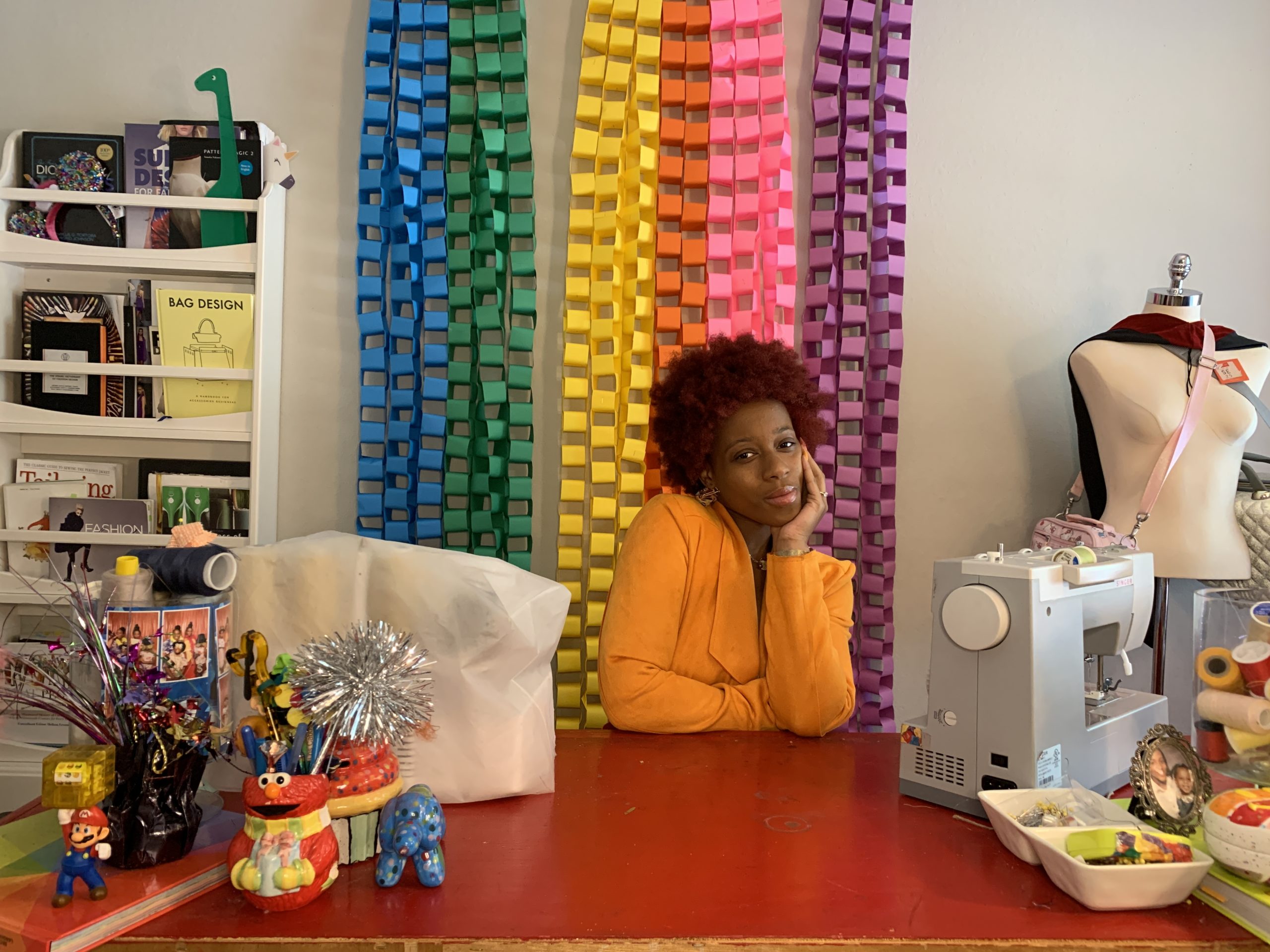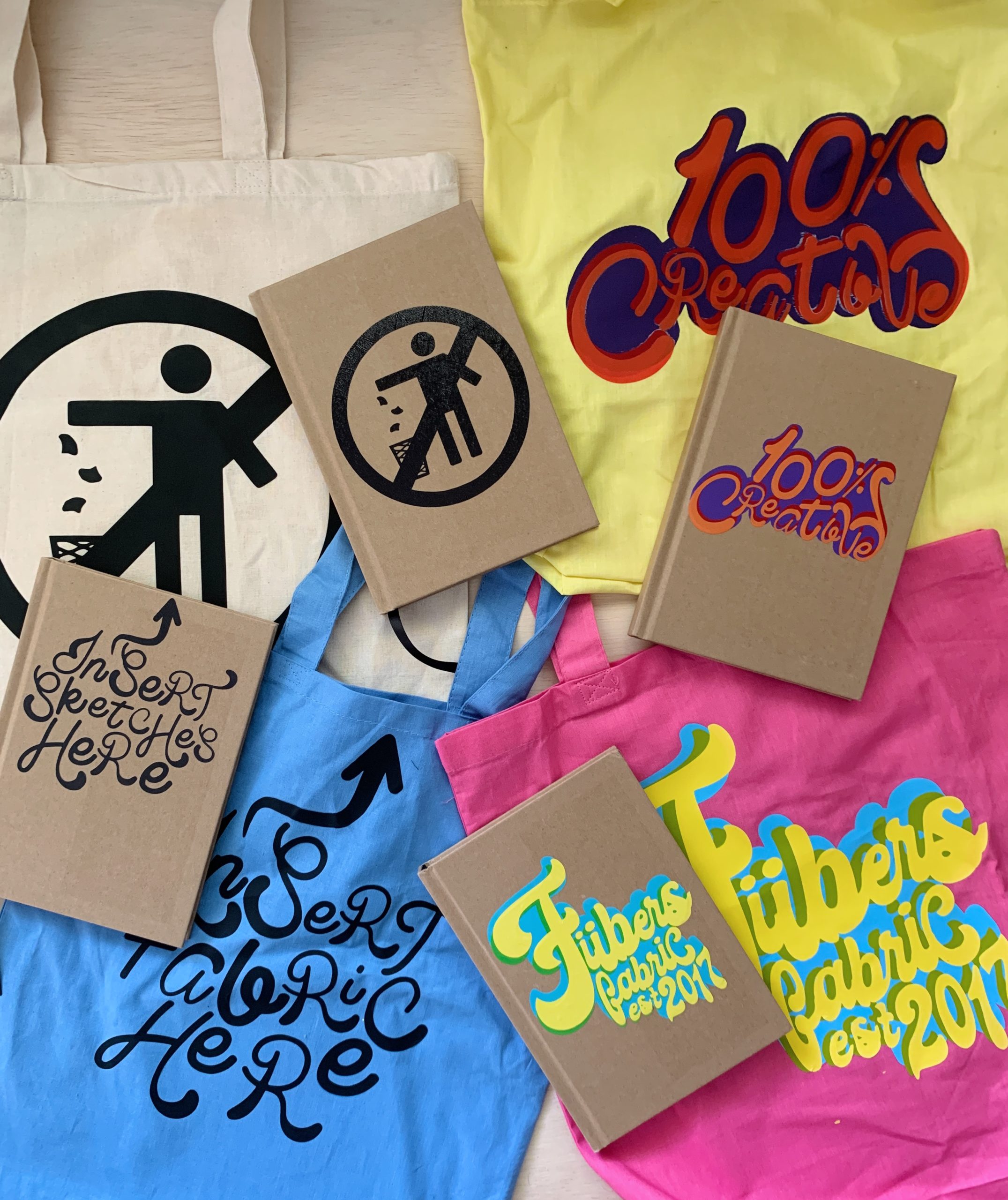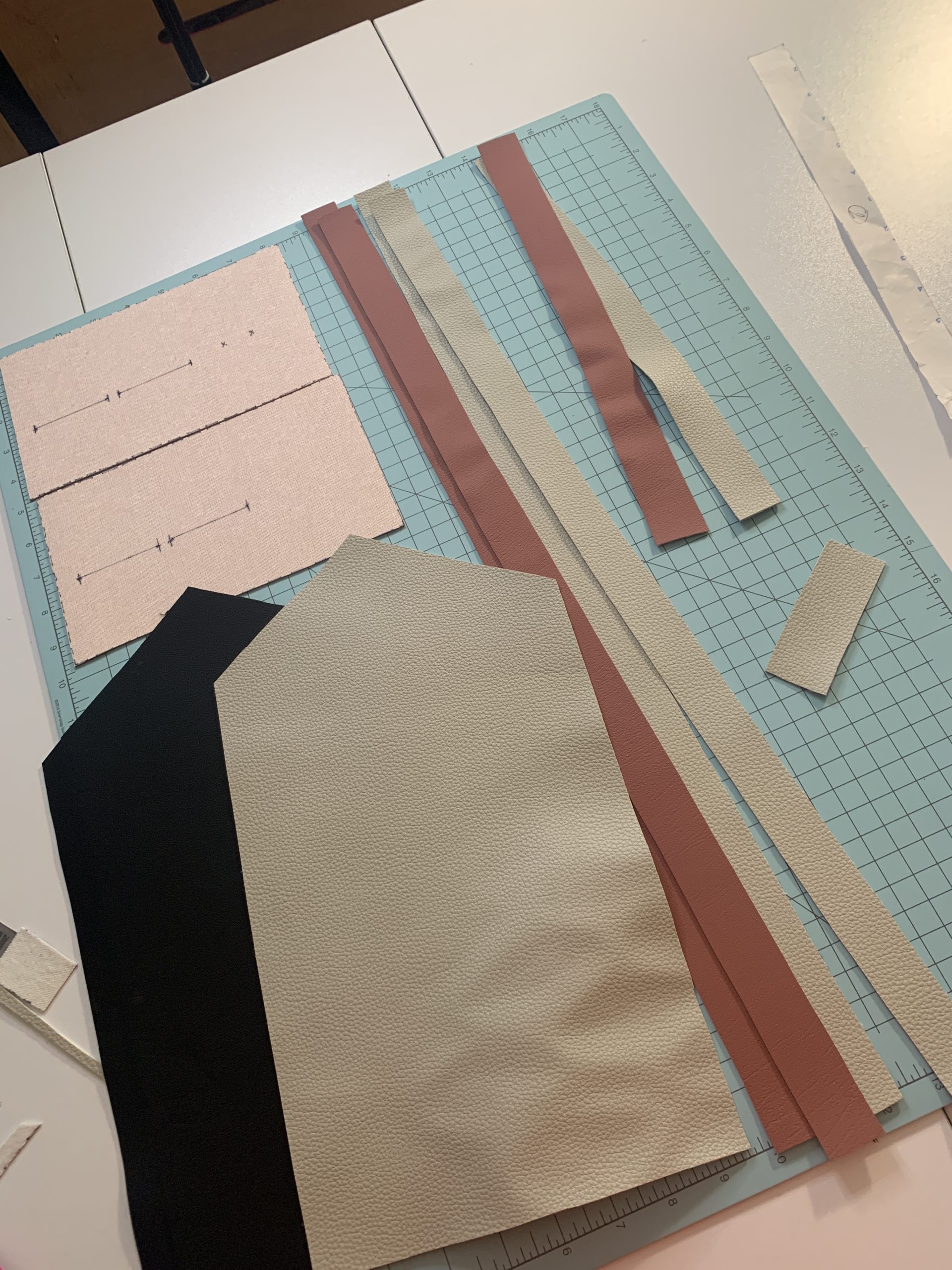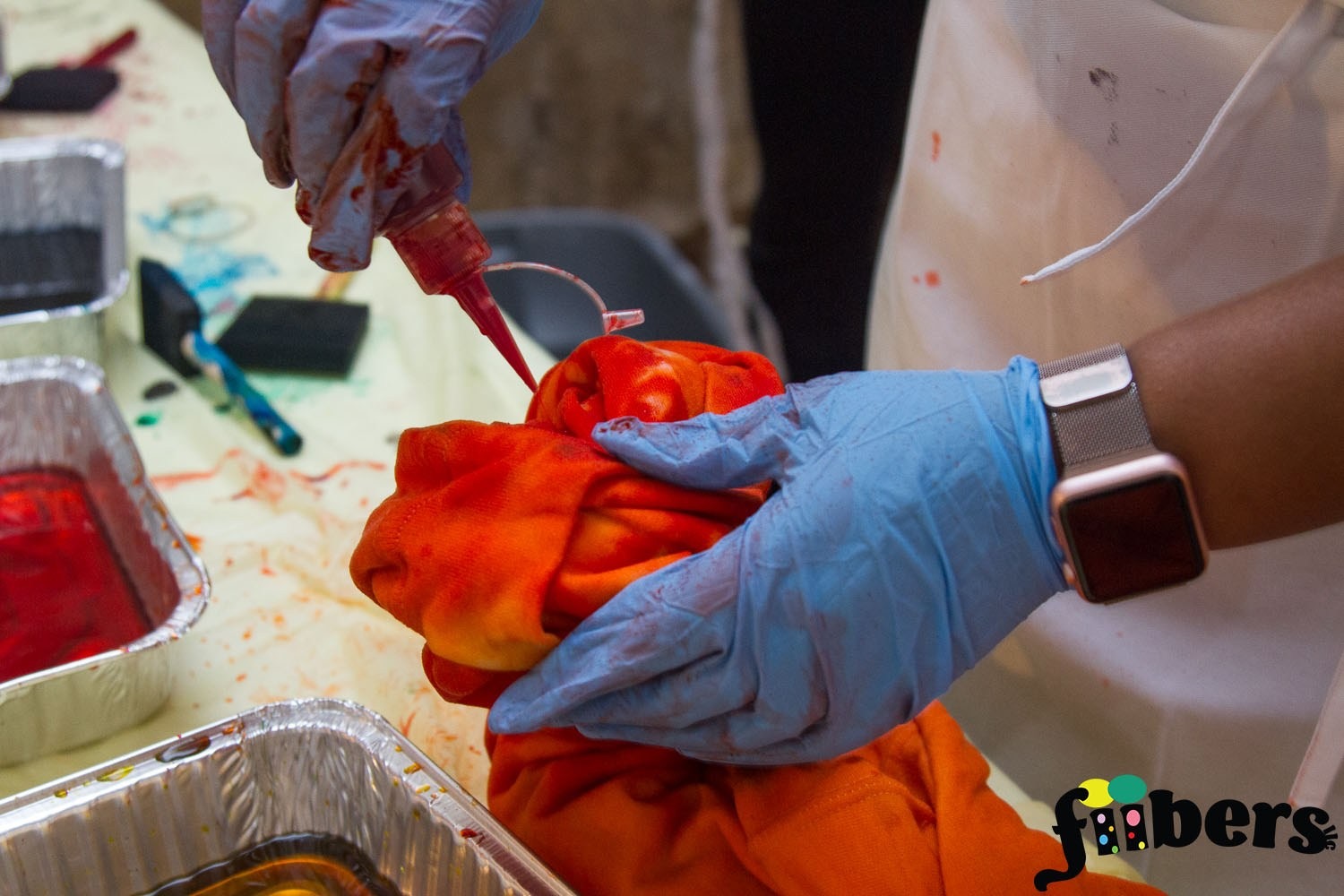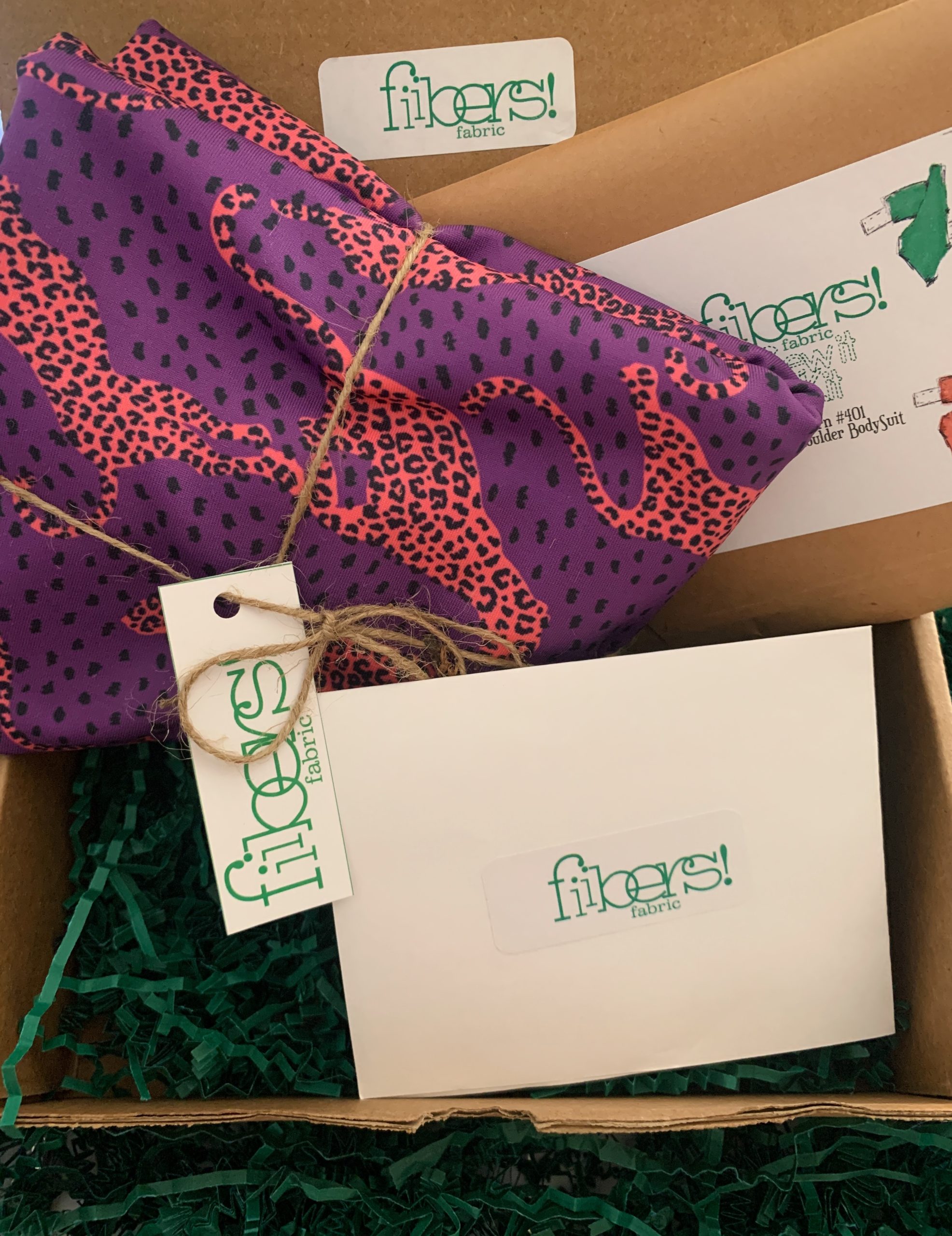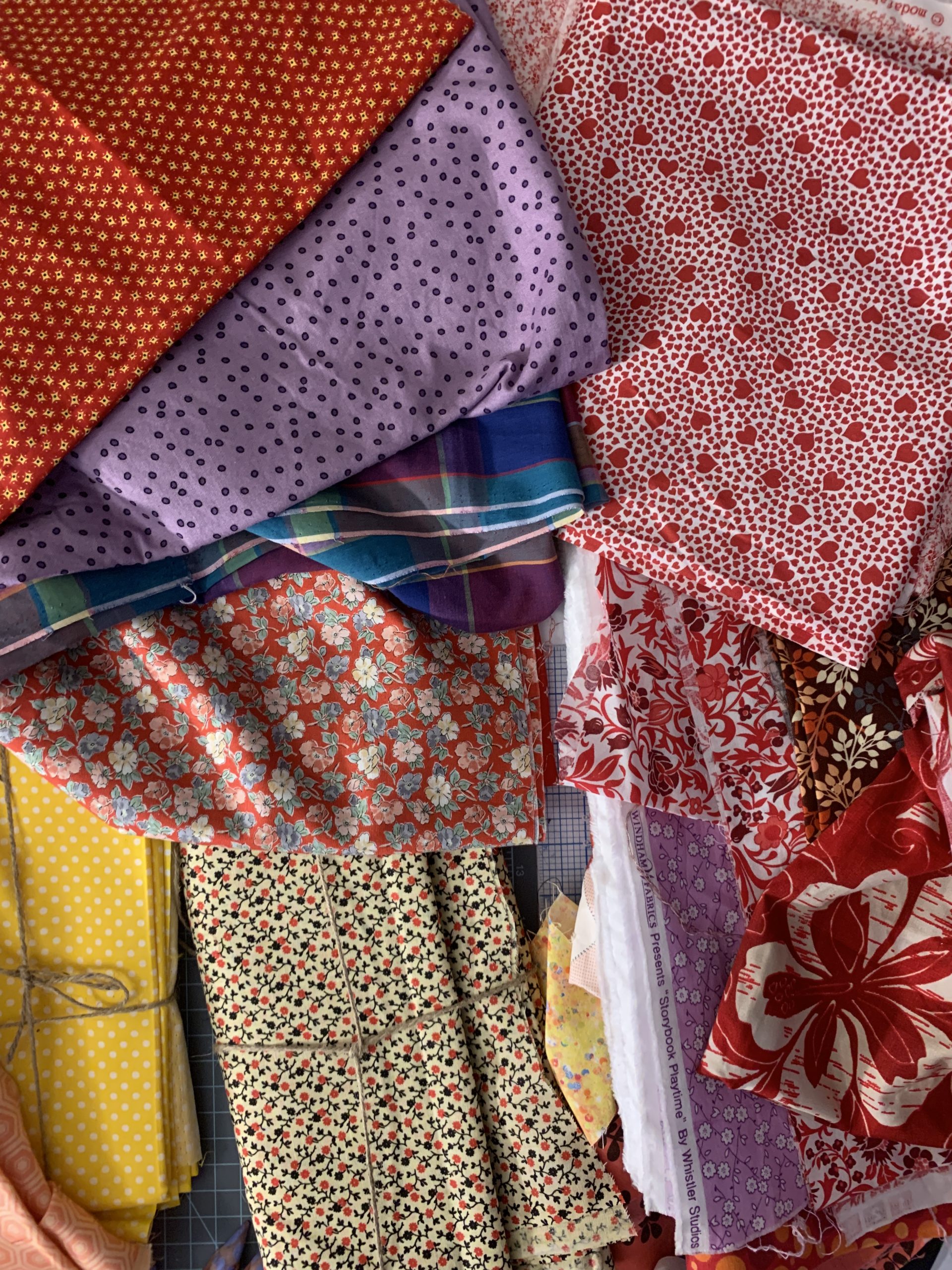Our women designers series is an on-going project to highlight innovative designers across the world. In this installment, we’re highlighting Atlanta-based designer Corinea “Coco” Austin, founder of Fiibers Fabric, a marketplace for sustainable and upcycled fabrics. We asked her to share with us the importance of diversity and inclusion in sustainability and how she’s incorporating sustainable practices into her work.
Tell us a bit about your background, where you grew up, your hobbies, where you went to school, etc.
I am originally from Louisville, KY. I moved to Tampa, FL for my high school years, then I moved to Georgia for my college career. I gained a lot of my creativity from my childhood, I grew up the as an only child, therefore I spent a lot of time solving my own boredom. I can’t say I started my love for fashion at a young age, I more so cared about style and art. As I got older, I realized I could combine both, and that is where my love for fashion came from. I explored the idea and fell in love with it. I did not have the fashion story of collecting vogue magazines and dreaming of being a designer. I just grew into creativity and realized fashion was a way I come convey who I was.
What inspired you to start a career in fashion and textiles?
My interest in fashion started with theater. Going to plays at a young age started my interest in costume design. Then, one day I started to draw out the characters and clothes I was reading on books I had to read to keep me entertained. It then turned into me creating clothes I could not get. My first collection was in middle school, when I designed bathing suits because my mom wouldn’t let me get the 2-piece bandana one. From that point I drew full pages of clothes and cartoons in class. I didn’t actually explore a career in fashion until I got to high school. I studied Physical Therapy, but I always wanted a job in fashion. It was my dream. I still did not pursue it until I went to college for Physical Therapy and changed my majors. My fashion career started at Georgia Southern University, then I convinced my mom to let my transfer to the Savannah College of Arts and Design (SCAD) Atlanta campus where I finished out my fashion career.
What are some of the challenges you have encountered in your career?
One of the main challenges I have faced in the industry has been the getting the opportunities. When I look at people I can “look up to” none of them look like me. Therefore, it is a harder for people to believe that a person like me can do the job. I have had phone interviews that went amazing, but when they saw me everything went left. I always knew I wanted to work for myself, but eventually I started to understand that the traditional path- “graduate, internship, job, gain experience, work for self.” – didn’t work for me while I was still in school. I realized that not only did I have to work for myself, but I also had to fend for myself. We always talk about how “its not what you know, its who you know,” which is completely true. However, this perpetuates the nepotism and “gate-keeping” we see all the time in the industry. This usually means the industry is only pulling from the pool of people around. Which isn’t people like me because when the industry was being built, people who looked like me were fewer. This is what black women mean when they say the industry wasn’t made with us in mind. The tragedy in pulling from the same pool is that is creates the same art and the same fashion. Once I realized I had to make my path to succeed, I then made it a point to help others like me and bring us all up.
“This is what black women mean when they say the industry wasn’t made with us in mind. The tragedy in pulling from the same pool is that is creates the same art, and the same fashion.”
Tell us about your creative process… What inspires you?
My creative process is a little odd. I tend to work backwards; I start with what I want and find out how to get it. I allow myself to freely sketch, but I am very indecisive. It can take me a long time to come up with a collection. I realized starting with my end helps me a lot. That may mean starting with a script first, creating a mood board or knowing what result I want from Fiibers. I also make sure I stay busy. When I do nothing, I get uninspired fast. It’s like a domino effect. When I am doing one project I am in love with, I can think of another one. That is my “groove” – staying busy with work I am passionate about. I also love video games; that also gives me my inspiration. I don’t get burnt out fast because I make sure I only take on projects I love. Surrounding myself my what I love and what makes me happy really is the key for me.
What is your advice for young people who want to pursue a career in fashion?
One key advice I can say is learn and adapt fast, but the key to that is knowing who you are and staying in that. You must catch on and adapt to the industry. It is always evolving, and you must make sure you are months in front of it. Also, stick to you who you are, but don’t be stuck on one idea of you. I always see my peers and people coming up holding onto an idea they should have let go of a long time ago. Sometimes it’s a product and sometimes it’s the idea of who you think you should be. You have to fail, but you have to grow. With that comes trying new things. Once I let go of the idea of who I wanted to be and realized who I was in any role, things became easier and I found myself in rooms I didn’t think I would be in.
“One key advice I can say is learn and adapt fast, but the key to that is knowing who you are and staying in that. You must catch on and adapt to the industry.”
Tell us about Fiibers and how you started your brand.
Fiibers started as an idea while I was in college. I had to stay an extra semester after my senior collection, meaning I had to graduate a year later, while all my original classmates graduated. During this extra semester… I was upset, but my idea for Fiibers came to flourish. I and my original classmates had all this extra fabric from our Senior collection, and we had nothing to do with it. I could not find any store that would take it and I did not want to throw it away. This was also around the time I started to care about sustainability. From there I saw a problem I felt I could solve, and Fiibers was born. That extra semester I spent taking a textiles class, which is an intro class, so I was the oldest person in there. I learned everything I could, with all the intention of starting Fiibers. I started out from my living room and held test events in that same living room. I collected all my friends’ fabrics, learned about websites, and Fiibers was born. I knew I wanted it to be the starting point for sustainable designers and a fiber is the first thing you need to make fabric. That is how the name was born.
Share a bit about your journey towards sustainability and why it is an important component of your brand.
Sustainability was important to me because I realized that the industry I was in was one of the leading industries to contribute to global warming, water, and toxic waste. When I started to learn about it, I realized my notion of sustainability was not a complete reality. There are different ways to be sustainable and I wanted to make it a point to educate people on these ways. Sustainability is about the smaller steps you make. I understand consumerism and how hard it is to change the masses. Therefore, I made my goal to teach my fashion niche one small step at a time. These small steps in one niche can make a huge impact. For example, I have saved over 800 yards of fabric from being in landfills from my living room. This may not seem like much, but I redistributed it to other designers and got them to understand how important it is to use your fabric wisely. It is a small dent into the tons of fabric wasted in the landfills. These small steps are what matter; it becomes a domino effect. First we redefine what “sustainable” fabric means, because it’s not just about natural fabrics, and we can then make the step towards more “sustainable” designs techniques and so on. Overall sustainability is important to the brand because it is our responsibility to grow and teach the next generation of designers. Even if one designer does something small towards sustainability, we could all have a big impact. In humanity, I have always felt like it’s your responsibly to teach and educate the next about things you did not know. Redefining what sustainability is is the next step to growing the movement.
“These small steps are what matter; it becomes a domino effect. First we redefine what “sustainable” fabric means, because it’s not just about natural fabrics, and we can then make the step towards more “sustainable” designs techniques and so on.”
At YKK, sustainability is a key component of our management style, product manufacturing, and our CSR activities. It is, as a matter of fact, deeply ingrained in our corporate values and philosophy. To learn more about our sustainable products and initiatives visit: https://www.ykkfastening.com/sustainability/
What are some of the fashion trends you are enjoying the most this season?
Textile-wise I am in love with satin being used in the Autumn/Winter. I also love the idea of leather maxi coats and loose monochrome suiting. I am big on color theory in clothes, so mix-matching prints has always been my thing. It’s interesting how since we have all been inside, most people have gone back to wearing natural tones; that is a huge trend this season.
What are your hopes when it comes to the fashion industry becoming more diverse and inclusive?
When it comes to making the fashion industry more diverse, I honestly just want it to last because it’s going to take decades to fix. Like I said, the fashion industry wasn’t built for Blacks, or any other minority group. This means that executives in the company must change. Their minds need to be redefined, but that starts with confronting their own prejudice and becoming more self-aware, which is going to be the hardest part. These fashion brands have been around for hundreds of years; it’s built into their DNA. We go back to representation being important for people to see themselves, but also to prove to others that people like us can do the job.
I also want to see more diversity in the jobs behind the scenes. I want to see the growth of Black employees in the fashion industry, meaning in more executive positions. The opportunities and growth need to happen. However, as consumers start to demand more from brands and these diverse people pave their own paths for their communities, brands will catch up.
“However, as consumers start to demand more from brands and these diverse people pave their own paths for their communities, brands will catch up.”

